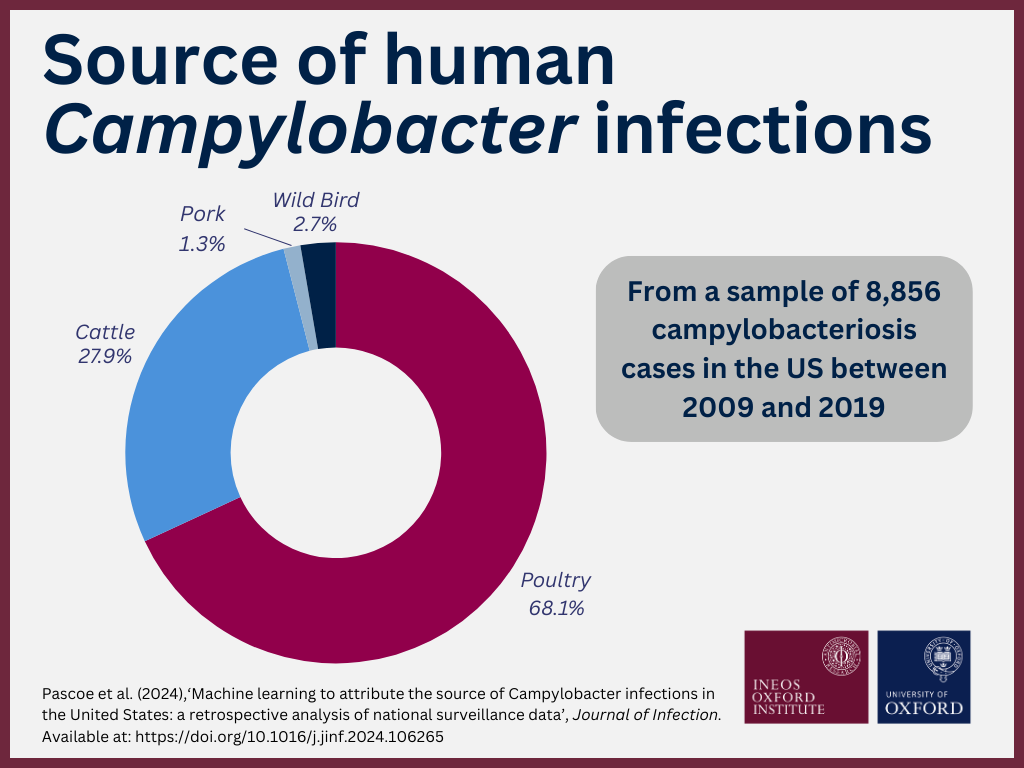Scientists at the Ineos Oxford Institute for antimicrobial research have found that 97% human Campylobacter infections in the US from 2009-2019 came from livestock reservoirs on contaminated meat. Campylobacteriosis is among the most common infections caused by a bacterium in humans, often as a foodborne illness. These infections are becoming increasingly resistant to antibiotics.
The new study in the Journal of Infection used data from national surveillance programmes in the US, which collect and genetically sequence samples of bacteria from confirmed cases of campylobacteriosis in humans. Using machine leaning, researchers were able to compare the genomes of bacteria that caused human infections to those found in livestock, wild birds, and the environment.
Our new ensemble machine learning approach identifies cryptic signatures in bacterial genomes including genes that help Campylobacter spread, infect humans and resist antibiotics.

As Campylobacter bacteria have evolved over time, they have left distinct markers in their genome which can be used to identify different strains. Computer models can be trained to use these markers to identify similarities between the bacteria causing infection in humans, to those originating from an animal or environmental sources, and predict which strains are the most likely source of infection.
The study makes use of data collected by multiple US public health agencies. By sharing data and expertise we’ve been able to conduct the largest study of this kind and provide invaluable data on the source of human infections.

Comparing 8,856 human infection genomes to 16,703 from potential animal sources, researchers found that 68% of human infections most likely came from poultry, 28% from cattle, with minor contributions from wild birds (3%), and pork (1%). They also looked for the presence of antimicrobial resistance genes in the genomes, and found that AMR increased over time across all animal sources, but in particular for poultry.

This research shows that poultry is a major reservoir for infection in the US. Chicken is the most popular meat consumed in the US, and is second only to pork worldwide. This research provides important evidence for policy makers working on interventions to help control the spread of infections worldwide.
We’ve shown that not only is poultry a significant reservoir of Campylobacter infections, but that AMR is increasing in livestock, especially poultry. In order to protect ourselves and our antibiotics, the poultry industry must look to reduce the spread of infection among poultry as a matter of urgency.

